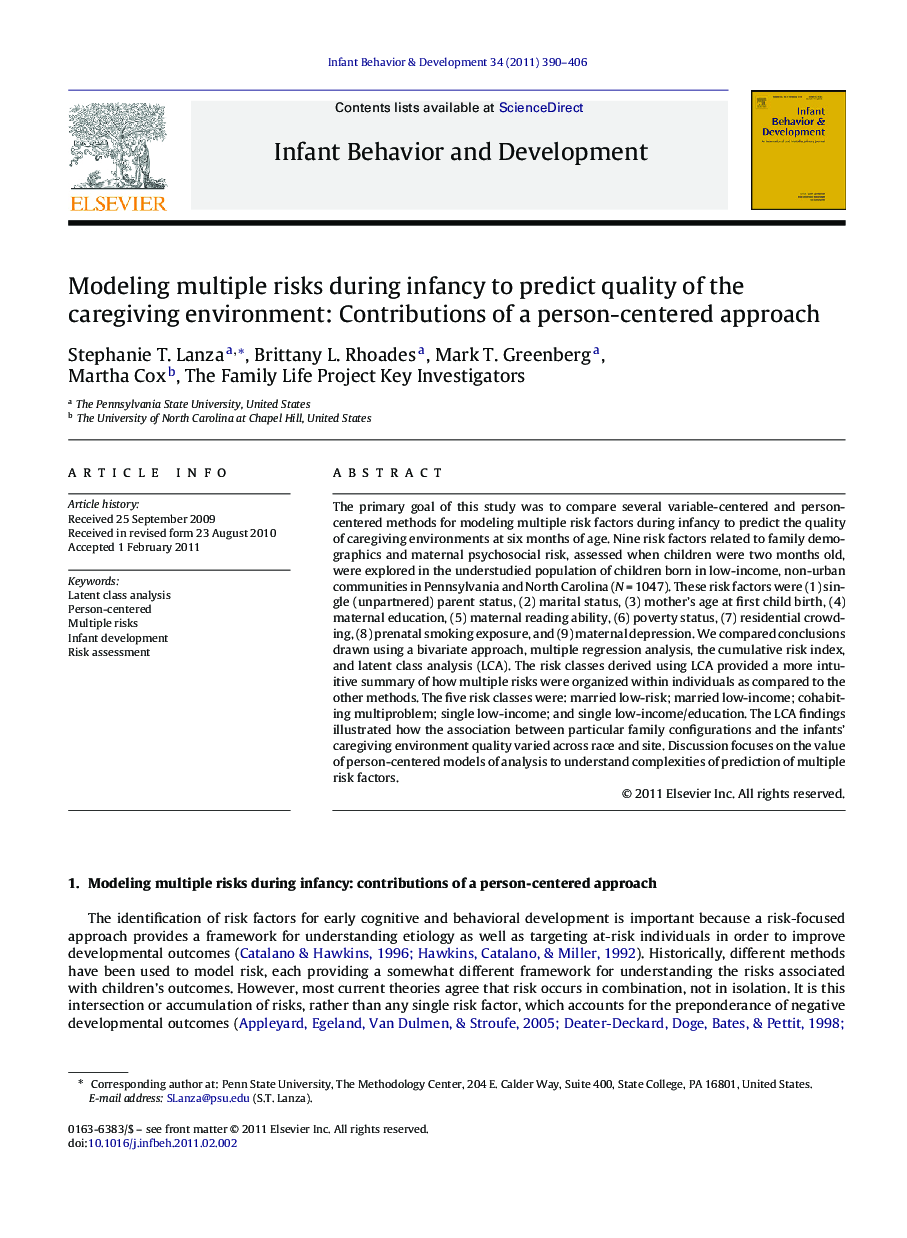| Article ID | Journal | Published Year | Pages | File Type |
|---|---|---|---|---|
| 917314 | Infant Behavior and Development | 2011 | 17 Pages |
The primary goal of this study was to compare several variable-centered and person-centered methods for modeling multiple risk factors during infancy to predict the quality of caregiving environments at six months of age. Nine risk factors related to family demographics and maternal psychosocial risk, assessed when children were two months old, were explored in the understudied population of children born in low-income, non-urban communities in Pennsylvania and North Carolina (N = 1047). These risk factors were (1) single (unpartnered) parent status, (2) marital status, (3) mother's age at first child birth, (4) maternal education, (5) maternal reading ability, (6) poverty status, (7) residential crowding, (8) prenatal smoking exposure, and (9) maternal depression. We compared conclusions drawn using a bivariate approach, multiple regression analysis, the cumulative risk index, and latent class analysis (LCA). The risk classes derived using LCA provided a more intuitive summary of how multiple risks were organized within individuals as compared to the other methods. The five risk classes were: married low-risk; married low-income; cohabiting multiproblem; single low-income; and single low-income/education. The LCA findings illustrated how the association between particular family configurations and the infants’ caregiving environment quality varied across race and site. Discussion focuses on the value of person-centered models of analysis to understand complexities of prediction of multiple risk factors.
► Nine risk factors for poor quality caregiving environment explored using four methods. ► Compared bivariate approach, regression, cumulative risk, latent class analysis. ► Five risk classes identified, from married low-risk to single low-income/education. ► Latent class analysis provided more intuitive and useful summary of multiple risks.
